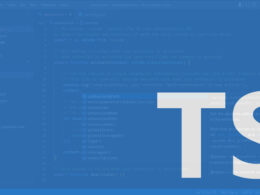Angular’s Applications: What is Angular Used For?

As the digital landscape shifts beneath our fingertips, crafting experiences that resonate with users has never been more pivotal. Angular, Google’s powerhouse framework, emerges as a steadfast ally in this quest, birthing Single Page Applications that capture and retain user attention with seamless interactivity.
In the marrow of this piece lies the decoded essence of Angular—its purpose, its very soul in the sphere of web development.
Navigate through a tapestry woven with TypeScript syntax, and discover the beauty of two-way data binding that makes Angular the cynosure for front-end developers.
Illumination awaits on how Angular transcends mere code to architect experiences users yearn to return to. Unearth the intricacies of modules, components, and directives that drive Angular’s engine.
By the final punctuation, anticipate a lucid vision of Angular’s role, plus the empowerment to harness its potentially transformative capabilities—whether you’re curating majestic web applications or championing user interface design.
What is Angular Used For?
Angular is used for developing single-page applications (SPAs) and dynamic web applications. It’s a framework that provides a robust platform for building mobile and desktop web applications, offering efficient data binding, modularity, and code reusability. Angular is favored in enterprise-level development for its scalability and maintenance features.
| Use Case | Features | Key Tools | Performance | Notable Implementations |
|---|---|---|---|---|
| Single Page Apps | MVC Architecture, Two-way data binding | Angular CLI | Optimized with AOT compilation | Gmail, Forbes |
| Enterprise Web Apps | Modularity, Maintainability | RxJS, NgRx | Scalable infrastructure | Microsoft Office Home |
| Mobile Apps | Cross-platform development | Ionic, NativeScript | Performant on mobile devices | Various business apps |
| Progressive Web Apps | Offline capabilities, Service workers | Angular Service Worker | Reliable performance | Several e-commerce sites |
| Web Development | Rich ecosystem, Reusable components | Angular Material | Improved with Ivy renderer | Upwork, PayPal |
Core Features of Angular

Key Components and Architecture
So, diving right into the heart of Angular. Ever asked yourself, “What is Angular used for?” It’s all about building super interactive websites and web applications.
Imagine a puzzle; each piece is crucial. That’s how Angular’s architecture works.
Model-View-Controller (MVC) and Model-View-ViewModel (MVVM) patterns
Angular’s like a backstage manager, handling the MVC and MVVM patterns. These aren’t just fancy acronyms!
They’re about splitting the app into manageable parts – making it easier to handle data (Model), the user interface (View), and the logic that connects the two (Controller). It’s like a well-orchestrated play where everyone knows their role.
Components, modules, templates, metadata, services, and dependency injection
Angular’s all about components. Think of them as the building blocks of your app. Each component has its little world – a template for the UI, a class for the logic, and some metadata to explain how it all fits together.
Then, there are modules – big boxes that neatly package your components and services. And oh, services!
They’re like secret agents carrying out specific tasks across components. Plus, Angular’s cool trick, dependency injection, makes sure components get the services they need without breaking a sweat.
TypeScript and Development Advantages
Role of TypeScript in Angular development
Okay, so Angular and TypeScript are like best buddies. TypeScript adds some extra oomph to JavaScript.
It brings in types, making it easier to catch errors and write more maintainable code. No more “Oops, that wasn’t supposed to happen!” moments.
Benefits of TypeScript for security and error handling
TypeScript isn’t just for show; it’s a shield. It helps in spotting errors early in the development cycle.
We’re talking about better security, fewer bugs, and a smoother ride for developers. It’s like having a safety net while performing a high-wire act.
Angular’s Development Environment
Diving into the world of Angular, ever thought, “What is Angular used for?” It’s more than just a tool; it’s a whole environment that changes how we think about web development.
It’s like stepping into a workshop where every tool is tailored to make building web apps a breeze.
Tools and Libraries
Angular CLI and its functionalities
Let’s talk about the Angular Command Line Interface (CLI). This thing is a lifesaver. Picture this: You need to set up a new project, add some components, maybe a service or two.
Instead of diving into a sea of manual setups, you just pop open the terminal and let the Angular CLI do the heavy lifting.
It’s like having a super assistant who knows exactly what you need, before you even ask.
First-party libraries for common functionalities
Angular’s like a Swiss Army knife, packed with first-party libraries. Need to route between different views?
There’s a library for that. Managing forms? Yep, there’s one for that too.
These libraries cover almost everything you could need for web development, making it super easy to add functionality to your apps.
It’s like having a toolbox where every tool fits perfectly for the job at hand.
Ease of Development
Simplified MVC pattern and modular structure
Angular takes the MVC pattern and turns it into something even more streamlined. It’s all about making things simpler and more intuitive. The modular structure?
It’s a game-changer. You can break down your project into smaller, manageable pieces, making it easier to maintain and scale.
It’s like building with Legos – each piece fits neatly with the others, but you can also rearrange them to create something new and awesome.
Code consistency and ease of testing
One of the coolest things about Angular is how it encourages consistency in your code. It’s like having a set of rules that everyone follows, making the code easier to read and maintain.
And when it comes to testing? Angular’s got your back. With built-in testing tools, ensuring your app works smoothly is as easy as pie.
It’s like having a safety net, catching any bugs or issues before they become a problem.
Angular in Web Application Development
When someone pops the question, “What is Angular used for?” think of it as the architect of the web world.
It’s not just any framework; it’s a game-changer in web application development. Angular is like the wizard behind the curtain, turning complex coding languages into beautiful, functional web applications.
Application Types Suited for Angular
Single-Page Applications (SPAs) and Progressive Web Applications (PWAs)
Angular is a rockstar when it comes to building SPAs and PWAs. SPAs? They’re like those super responsive websites where everything loads in a blink, no page refresh needed.
And PWAs? Imagine web apps behaving like native apps on your phone, smooth and accessible, even offline. Angular makes this magic happen with its efficient coding capabilities.
Enterprise web applications and interfaces with animations
Now, let’s talk enterprise applications. These aren’t your everyday websites. They’re like the heavy-duty trucks of the web world, carrying loads of data and complex functionalities.
Angular handles them like a pro, making sure they run smoothly and look sleek. And animations?
Angular adds that extra flair, turning static pages into interactive experiences. It’s like bringing a canvas to life, where each interaction is a brushstroke creating a masterpiece.
Performance and Scalability
Angular’s performance in web development
Performance is key, and Angular knows it. It’s designed to handle high-demand tasks with ease.
Think of it as a high-performance sports car, built for speed and efficiency. Angular ensures your web apps not only look good but also perform exceptionally under the hood.
Scalability for large-scale applications
Scalability is another area where Angular shines. It’s like a building block set; start small and keep adding blocks as you grow.
Whether it’s a startup project or a massive enterprise application, Angular scales with your needs. It’s like having a foundation strong enough to support a skyscraper.
Advantages of Using Angular
So, you’re hearing a lot about Angular and thinking, “What is Angular used for?” Let’s break down the cool stuff that makes Angular not just good, but great.
It’s like uncovering the secret ingredients that make your favorite dish so awesome.
Google’s Support and Community
Long-Term Support (LTS) from Google
First off, Angular has Google’s backing. That’s like having a tech giant in your corner. Google gives Angular Long-Term Support (LTS).
This means it’s not just a one-hit wonder; it’s more like a classic hit that keeps getting updates and stays relevant.
Active community and learning resources
Then there’s the community – think of it as a big, friendly neighborhood of Angular enthusiasts. Got a question? Need some tips?
The community’s got your back. Plus, there are tons of learning resources out there. It’s like having a library full of Angular wisdom at your fingertips.
User Interface and Experience
Declarative UI with HTML
Angular uses HTML to define UIs. It’s like sketching out your app’s look with the simplicity of HTML.
This makes it super intuitive to create and manipulate your app’s interface. It’s like telling a story, where HTML sets the scene and Angular brings it to life.
Enhanced user experience with dynamic content and responsive design
User experience is where Angular really shines. It’s all about creating dynamic, responsive designs that feel smooth and natural.
Think of it as crafting an experience that’s not just visually appealing but also incredibly user-friendly. It’s like making sure your guests not only admire your home but also feel super comfy in it.
Challenges and Limitations
Alright, let’s get real for a moment. When we’re talking about Angular, the question isn’t just “What is Angular used for?” but also, “What’s the catch?” No framework is perfect, right?
Angular’s no different. It’s got its own set of challenges and limitations. It’s like having a supercar that’s amazing on highways but a bit tricky in narrow city streets.
Learning Curve and Complexity
Angular’s steep learning curve for beginners
For starters, Angular’s learning curve can feel like climbing a mountain for beginners. It’s packed with advanced concepts like dependency injection, modules, and TypeScript. Getting a grip on these can be overwhelming at first. It’s like learning a new language while also trying to write a poem in it.
Complexity in comparison to other frameworks
Then there’s the complexity. Angular is robust, sure, but with that comes a level of complexity that can be daunting, especially if you’re comparing it with more straightforward frameworks like React or Vue.
It’s like having a Swiss Army knife with so many tools that you might not know where to start.
Technical Limitations
SEO challenges in SPAs
Angular is a champ at building SPAs, but here’s the rub: SPAs can have SEO challenges. Search engines sometimes struggle to crawl and index dynamic content generated by JavaScript.
It’s like throwing a fabulous party but forgetting to send out the invitations.
Performance considerations in comparison to frameworks like Vue and React
Performance-wise, Angular’s got a bit of a reputation for being a heavyweight.
When you stack it up against leaner frameworks like Vue or React, Angular can seem a bit more resource-intensive. It’s like choosing between a feature-packed SUV and a nimble sports car.
FAQ On What Is Angular Used For
What is Angular primarily used for?
Angular shines in the arena of constructing dynamic web applications. It’s adept at creating interfaces that respond instantly to user actions, thanks to its two-way data binding—a dance between the user and the interface creating an intuitive symphony.
Can Angular be leveraged for mobile app development?
Indeed, it finds a kindred spirit in cross-platform solutions, breathing life into apps that feel at home on any device. By wrapping Angular in a native shell, like with Ionic, one crafts mobile experiences that rival native applications.
What distinguishes Angular from other JavaScript frameworks?
Angular is not a mere framework; it’s an expansive toolbox. With TypeScript at its core and a rich tapestry of features like dependency injection, Angular stands out as the one-coat paint for intricate front-end development.
How do Angular’s MVC and MVVM patterns benefit web development?
These patterns instill order into chaos. They provide a clear partition between the application’s logic, its presentation, and the actions that trigger data updates. This separation streamlines management and enhances scalability, a godsend for modern, ambitious web projects.
Is Angular suitable for building a Single Page Application (SPA)?
Angular is practically synonymous with SPA. It excels in whisking users from one view to the next without the need for page reloads, making for a user experience that’s as fluid as river water.
How does Angular handle data management and state in complex applications?
With grace and precision. Angular’s use of Reactive programming and services ensures that when data dances, the state of the application follows suit without missing a beat, even in the most complex choreographies.
What is two-way data binding in Angular, and why is it beneficial?
Imagine your data as a bridge with traffic flowing both ways seamlessly. Make an update here, and it’s mirrored there—instantaneously. This cuts down code and simplifies data handling because Angular’s binding cares about synchronicity.
Does Angular offer any advantages for SEO?
Surprisingly, yes. With Angular Universal, the framework’s server-side rendering sibling, Angular apps can befriend search engine crawlers, presenting a fully-rendered page for indexing, thus making strides in SERP rankings.
How does dependency injection in Angular aid in application development?
Imagine being a chef with ingredients summoned to your pot with a snap of your fingers. That’s Angular’s dependency injection—delivering dependencies exactly where they’re needed, simplifying unit testing, and cutting down boilerplate code.
What role does Angular CLI play in application development?
Picture a trustworthy sidekick that streamlines your workflow. Angular CLI automates tedium with its powerful scripting capabilities, paving the way from project initiation to deployment with sterling precision, making it a cherished tool in the developer’s arsenal.
Conclusion
Embarking on this journey through Angular’s domain, we’ve unpicked the tapestry of what is Angular used for—a question that underpins the nucleus of modern web landscapes. With single-page applications that flow as smoothly as the most elegantly penned prose and a framework that speaks in the vernacular of dynamic, component-based architecture, Angular transcends the traditional confines of front-end development.
As the final act unfolds, grasp this: Angular harmonizes TypeScript’s capabilities, dependency injection, and an MVC architecture to forge experiences that enchant users, beckon search engines with server-side rendering, and empower developers to compose with an artist’s precision.
- We’ve voyaged past modularity and scalability challenges.
- Witnessed the two-way data binding that syncs with the rhythm of user actions.
- Marveled at Angular CLI tools that cut a clear path through development thickets.
With these revelations, the Angular enigma dissolves—its role in the contemporary web ecosystem as clear as day.
- Avoid Spam Calls: Caller ID Apps Like Truecaller - May 19, 2024
- Streamline Data Access with JavaScript’s for-in Loop - May 19, 2024
- Master Your Build: Essential Java Build Tools - May 19, 2024








